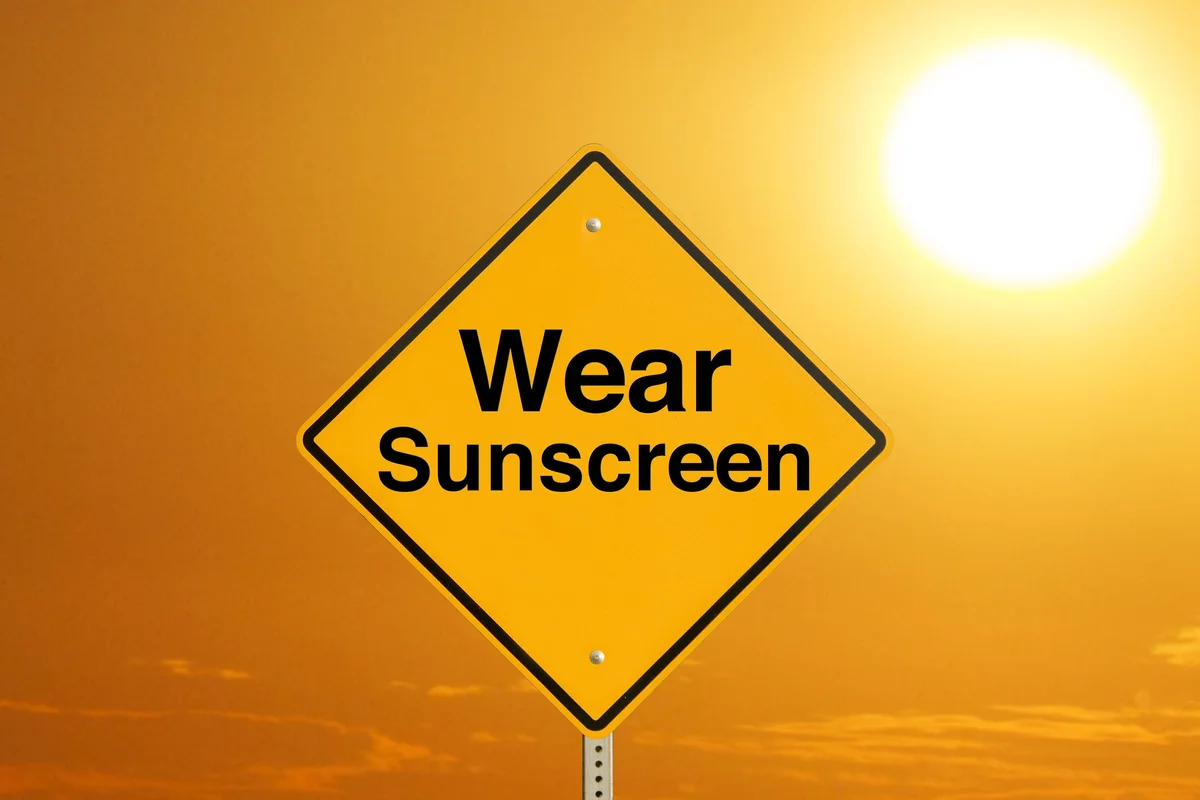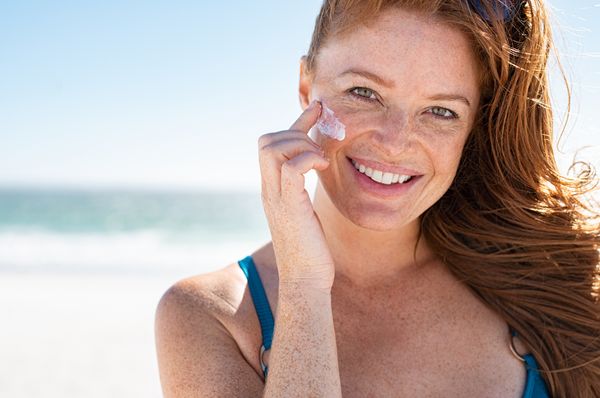Skin cancer is the most-common cancer in the world. In fact, one American in five will get skin cancer by the time they turn 70.
The good news is that it's also highly preventable and treatable. We reached out to Elizabeth Liotta, M.D., a dermatologist and member of the HealthyWomen Women's Health Advisory Council, to find out more about this common disease.
What are the different types of skin cancer?
There are four main types of skin cancer. The three most common are malignant melanoma, basal cell carcinoma and squamous cell carcinoma. The fourth type, Merkel cell carcinoma, is highly aggressive, but it's also extremely rare.
Basal cell carcinoma is the most common type of skin cancer and is primarily caused by sun exposure. It often occurs on the head and neck, although it can develop on any part of the skin. Squamous cell carcinoma is primarily caused by sun exposure or other types of damage to the skin, such as X-rays or chemicals. Melanoma is an aggressive form of skin cancer that is caused by a combination of environmental factors and genetics. It can spread (metastasize) to other parts of the body, including internal organs, if it's not caught and treated early.
Is skin cancer treatable? If so, what are the skin cancer treatments?
Skin cancer is very treatable. Depending on the type of cancer, treatments can include topical medications, burning, scraping, surgical removal of the cancer and — in the most-extreme cases — radiation treatment. Most skin cancer is treated with surgery.
Since basal cell carcinoma doesn't spread, it can often be treated topically. Burning, scraping or excision treatments can also be used for basal cell carcinoma that is deeper underneath the skin. Mohs micrographic surgery is a tissue-sparing technique used for higher-risk tumors or those on the face.
For any type of cancer, the earlier the diagnosis and treatment is done, the higher the cure rate.
How do I know if I need to see the doctor if I have a mole or a discoloration on my skin?
When it comes to suspicious spots on your skin, warning signs of cancer can include itching, bleeding, pain, rapid growth or significant changes in size or color over a few months and should be checked out by a dermatologist. Having a yearly skin check can help ensure that any changes or warning signs on your skin are detected early.
What can I do to prevent skin cancer?
Protecting yourself from the sun can help reduce your risk of skin cancer. That means practicing sun safety by using sunscreen regularly, as well as staying in the shade as much as possible and wearing protective clothing and hats.
How much does getting a bad sunburn increase my chances of getting skin cancer?
Sun damage is cumulative, beginning with your very first sunburn. The more you burn, the greater your risk of skin cancer, and as little as one blistering sunburn in childhood or adolescence more than doubles your chances of developing melanoma in later life. Getting five or more sunburns more than doubles your risk of melanoma throughout your lifetime. UV damage can also occur even when there's no obvious burn, such as in cloudy weather, which is why sun safety is always important.
Does everyone need to wear sunscreen? Are any groups/races more or less at risk for skin cancer?
People with fair skin are at the greatest risk for getting damage from the sun, but people with all skin types can burn and suffer damage from the sun. Everyone should wear sunscreen and practice other forms of sun safety.
Fair-skinned people, especially those with red hair and light, freckled skin, need to take particular care. For them, sunburn plays a clear role in developing melanoma. The UV rays that damage skin can also turn off a tumor-suppressing gene, which can eventually result in progressing to cancer.
Can I get skin cancer from indoor tanning?
Many people believe indoor tanning is safe, but it's actually very risky. You can get basal cell carcinoma or squamous cell carcinoma from tanning beds, as well as photodamaged skin and premature aging. Regular use of a tanning bed, defined as at least five times in one year, before the age of 35 increases your risk of melanoma by 75%.
How can women do a skin cancer body check at home?
Start by looking in a full-length mirror and use a handheld mirror as well. Then check each part of your body for rapid changes in color, size, shape or border of growths. Start at your scalp and move to your toes, using both mirrors. The American Academy of Dermatology has instructions on its website. They recommend that you do these checks every six to eight weeks.
Dermatologists recommend annual skin exams for adults, especially if you've had significant sun damage, tanning bed use or a family history of melanoma. Self-checks should not replace your yearly exam by a dermatologist.
What type of sunscreen is best to use and how should I use it?
You should use a broad spectrum UVA/UVB sunscreen with an SPF of at least 30. Apply the sunscreen at least 15 minutes before you are going to be in the sun and reapply it every two to three hours if you're sweating a lot or swimming. Barrier sunscreens such as zinc or titanium dioxide are immediately effective and don't sting the eyes or cause a rash. They are more effective than spray sunscreens because the wind may decrease the coverage when you apply sprays.
What chemicals should we avoid when buying sunscreen?
As important as wearing sunscreen is for reducing your risk for skin cancer, some sunscreens have ingredients in them that should be avoided, because they may be hormone disruptors and may carry their own risks. When buying sunscreen, it's a good idea to check the labels and avoid any products that contain oxybenzone or propylparabens.
Do we need sunscreen even if it’s a cloudy day?
The short answer is yes. Chronic sun exposure increases your risk of skin cancer by causing damage to your skin cells, which can lead to cancer, even if your skin isn't obviously burned or red.
Pay attention to the UV index — a high UV index may indicate that unprotected skin will burn faster — and take the proper precautions if you're going to be spending time in the sun. UVA can even penetrate through window glass, so it's a good idea to protect your skin anytime it will be exposed to the sun.
Remember, there is no healthy tan. Even a light-pink burn is evidence of skin injury, and a suntan can result in premature aging and skin cancer.
- Unexpected Places You Can Get Skin Cancer - HealthyWomen ›
- Skin Cancer Warning Signs and the Importance of Annual ... ›
- How to Worship the Sun Without Getting Burned - HealthyWomen ›
- Melanoma 101 - HealthyWomen ›
- Fact or Fiction? Sun Safety Quiz - HealthyWomen ›
- Melanoma 101: factores de riesgo, diagnóstico, etapas y tratamiento - HealthyWomen ›
- ¿Por qué las personas de color tienen más probabilidades de morir de cáncer de piel? - HealthyWomen ›
- Why Are People of Color More Likely to Die from Skin Cancer? - HealthyWomen ›
- How to Conduct a Skin Cancer Self-Exam If You Have a Darker Skin Tone - HealthyWomen ›
- Cómo examinar tu piel para detectar cáncer si tienes un tono de piel más oscuro - HealthyWomen ›
- Monica and the Melanoma Check - HealthyWomen ›
- Mónica y la examinación para detectar melanoma - HealthyWomen ›
- Don’t Skip Sunscreen Lotion - HealthyWomen ›







